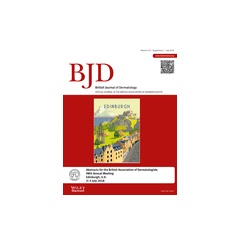Investigational Treatment for Acne Appears Promising in Laboratory Studies
The pharmacological potency of trifarotene translates from in vitro models to topically treated human skin in vivo, resulting in the modulation of biological pathways that collectively are expected to translate into strong clinical efficacy in acne
Topical retinoids, which target retinoic acid receptors, are commonly used to treat acne. New research published in the British Journal of Dermatology reveals that trifarotene, a fourth-generation retinoid with potent and selective activity against only one particular retinoic acid receptor, may have an improved efficacy and safety profile compared with less selective retinoids.
Trifarotene is expected to result in low systemic levels, while retaining strong activity at the skin. This is likely to lead to reduced side effects.
“The pharmacological potency of trifarotene translates from in vitro models to topically treated human skin in vivo, resulting in the modulation of biological pathways that collectively are expected to translate into strong clinical efficacy in acne,” said senior author Dr. Johannes Voegel, of Galderma R&D, in France. “As trifarotene is expected to be rapidly eliminated in the blood stream, this drug should be particularly useful for the treatment of large skin surface areas, including the back and chest of acne patients.”
Additional Information
Link to Study: https://onlinelibrary.wiley.com/doi/abs/10.1111/bjd.16719
About Journal
The British Journal of Dermatology (BJD) strives to publish the highest quality dermatological research. In so doing, the journal aims to advance understanding, management and treatment of skin disease and improve patient outcomes.
BJD invites submissions under a broad scope of topics relevant to clinical and experimental research and publishes original articles, reviews, concise communications, case reports and items of correspondence. The article categories within the journal are: cutaneous biology; clinical and laboratory investigations; contact dermatitis & allergy; dermatological surgery & lasers; dermatopathology; epidemiology & health services research; paediatric dermatology; photobiology; and therapeutics.
BJD is an official organ of the British Association of Dermatologists but attracts contributions from all countries in which sound research is carried out, and its circulation is equally international. The overriding criteria for publication are scientific merit, originality and interest to a multidisciplinary audience.
Journal content and further information—including author guidelines and submission details—can be found online at www.brjdermatol.org. The 2016 impact factor is 4.706.
( Press Release Image: https://photos.webwire.com/prmedia/6/226211/226211-1.gif )
WebWireID226211
This news content was configured by WebWire editorial staff. Linking is permitted.
News Release Distribution and Press Release Distribution Services Provided by WebWire.
